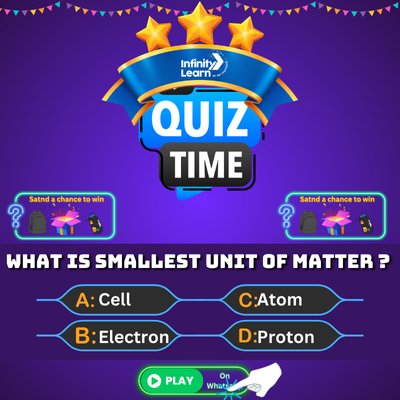Table of Contents
bridge rectifier
, which will be the topic of this article.
This circuit consists of four diodes connected together in what is known as a full-wave rectifier. The diodes are connected in a way that makes it possible to use both halves of the sine wave to charge up the capacitor and use the power from the capacitor to supply the load.
The circuit above uses two capacitors in series to make a full-wave rectifier. The first capacitor is charged up on the positive half of the sine wave and the second capacitor is charged up on the negative half of the sine wave. The two capacitors are then connected in parallel so that the two voltages add together and the capacitor can supply the load with DC power.
The Bridge Rectifier
The bridge rectifier is a circuit that is used to convert AC to DC power. It is made up of four diodes that are connected together in a way that makes it possible to use both halves of the sine wave to charge up the capacitor and use the power from the capacitor to supply the load.
The first capacitor is charged up on the positive half of the sine wave and the second capacitor is charged up on the negative half of the sine wave. The two capacitors are then connected in parallel so that the two voltages add together and the capacitor can supply the load with DC power.
The bridge rectifier is a very efficient way to convert AC
Bridge Rectifier Definition
A bridge rectifier is a diode circuit that uses four diodes connected in a bridge arrangement to produce full-wave rectification. This type of rectifier is used to convert an alternating current (AC) input into a direct current (DC) output. The rectifier circuit converts both positive and negative half cycles of the AC waveform into DC. The output DC voltage is equal to the peak value of the AC input voltage multiplied by the bridge rectifier circuit’s efficiency.
What is a Bridge Rectifier?
A bridge rectifier is a type of rectifier that uses a bridge circuit to convert alternating current (AC) into direct current (DC). A bridge rectifier is made up of four diodes arranged in a bridge configuration. The diodes allow current to flow in only one direction, converting the AC current into DC current.
Bridge Wave Rectifier
1n4007 Datasheet Pdf Download084f2db8c6The 1N400x (or 1N4001 or 1N4000) series is a family of popular 1 A general-purpose silicon rectifier diodes commonly used in AC-to-DC power supplies. 1n4007 datasheet pdf, 1n4007 pdf, 1n4007 pinout, 1n4007 data, 1n4007 circuit, ic, manual, parts1n4007 rectifier diode datasheet pdf download – File size: 1283 Kb Version: 2.5 Date added: 3 Mar 2017 Price: Free Operating systems: Windows XP/Vista/7/8/10 MacOS Downloads: 4789 DOWNLOAD NOW 1N4007 Pdf Download 1N4007 Datasheet 1N4007 PDF, 1N4007 circuit and Application notes, 1N4007 lifecycle. 1N4007 Rectifier Diode. . 1N4007 Rectifier Diode.1n4007 datasheet pdf download – File size: 3843 Kb Version: 5.2 Date added: 9 Apr 2017 Price: Free Operating systems: Windows XP/Vista/7/8/10 MacOS Downloads: 4530 DOWNLOAD NOW 1n4007 datasheet, 1n4007 pdf, 1n4007 data sheet, datasheet, data sheet, pdf, page 2. 1N4007
Bridge Rectifier Waveform
The output waveform of a bridge rectifier looks like this:
As you can see, there is no DC component in the output waveform.
Advantages of Bridge Rectifier
Bridge rectifier has several advantages over full-wave rectifier.
Bridge rectifier does not require a center-tapped transformer. Therefore, the bridg
Characteristics of Bridge Rectifier
Circuit:
The bridge rectifier circuit has four diodes arranged in the form of a bridge.
The bridge rectifier circuit uses full-wave rectification.
The bridge rectifier circuit can be used with both AC and DC input voltages.
The bridge rectifier circuit has a higher efficiency than a half-wave rectifier circuit.
The bridge rectifier circuit is more expensive than a half-wave rectifier circuit.
Ripple Factor of Bridge Rectifier
:
The ripple factor of the rectifier is defined as the ratio of the r.m.s. value of the AC component to the DC value of the rectifier output.
Ripple Factor = V AC / V DC
Where,
V AC = r.m.s. value of AC component
V DC = DC value of rectifier output
The ripple factor of the bridge rectifier is 0.482.
Peak Inverse Voltage (PIV):
The peak inverse voltage (PIV) of the rectifier is defined as the reverse voltage applied to the rectifier diode when the rectifier is not conducting.
PIV = V max – V DC
Where,
V max = Maximum voltage applied to the rectifier diode
V DC = DC value of rectifier output
The peak inverse voltage (PIV) of the bridge rectifier is 2V max .
Applications of Bridge Rectifier:
The bridge rectifier is used in many applications. A few of them are listed below.
Peak Inverse Voltage
: 800V
Peak Reverse Voltage: 700V
Package: TO-247AC
Applications: Power rectification
Caution:
1. Do not apply excessive force or impact to the products and accessories
2. Do not place heavy objects on the products and accessories
3. Do not use inflammable cleaning agents (such as gasoline) to clean the products and accessories
4. Do not expose the products and accessories to the humid environment for long time
5. Do not disassemble or change the products and accessories
6. Do not use the products and accessories beyond the specified operating temperature and storage temperature
7. Do not use the products and accessories beyond the specified maximum ratings
8. Do not reverse the polarity of the products and accessories when installed
9. Do not apply AC voltage to the products and accessories
10. Do not touch the products and accessories with bare hands when they are energized
We can customize according to your requirements, please provide us a drawing or design, thanks.
Remarks:
1, please check the specifications and appearance carefully to insure that there’s no mistake;
2, the picture is only for reference, please make the object as the standard;
3, please contact us to get the better prices.
The Efficiency of Bridge Rectifier
with
Different Types of Diodes
Introduction:
A rectifier is a device that converts alternating current (AC) to direct current (DC). The
most common type of rectifier is the full wave rectifier. The rectifier is used in many
electronic devices and appliances.
A full wave rectifier converts the whole waveform of an alternating current (AC)
power supply into one of constant polarity (positive or negative). The rectifier is used in
electronic devices and appliances that require power supplies with constant polarity.
The rectifier is also used in many electrical and electronic devices that use DC power
supplies.
The rectifier can be made with a number of different types of diodes. The most
common type of rectifier is the bridge rectifier. The bridge rectifier is made with four
diodes in a bridge configuration. The bridge rectifier is the most efficient type of
rectifier.
The efficiency of a rectifier is the ratio of the DC power output to the AC power
input. The efficiency of a rectifier is affected by the type of diode used. The most
common type of rectifier is the bridge rectifier. The bridge rectifier is the most
efficient type of rectifier.
The bridge rectifier is made with four diodes in a bridge configuration. The
Advantages of Bridge Rectifier
Circuit
The bridge rectifier circuit has a number of advantages over other rectifier circuits. Some of the advantages are listed below:
1. The bridge rectifier circuit is more efficient than other rectifier circuits.
2. The bridge rectifier circuit does not require a center-tapped transformer.
3. The bridge rectifier circuit can be used with both AC and DC inputs.
4. The bridge rectifier circuit is less expensive than other rectifier circuits.
5. The bridge rectifier circuit is more reliable than other rectifier circuits.
Disadvantages of Bridge Rectifier
:
1. Bridge rectifier has a higher forward voltage drop than a full-wave rectifier with a center-tapped transformer.
2. There are four diodes in the bridge rectifier circuit, so if one of the diodes fails, the entire circuit will not work.
Peak Inverse Voltage of a Bridge Rectifier
The peak inverse voltage of a bridge rectifier is the maximum voltage that can be applied to the device in the reverse direction without causing damage. The peak inverse voltage is typically specified as a multiple of the rectifier’s forward voltage drop. For example, a rectifier with a forward voltage drop of 0.7 volts and a peak inverse voltage of 5 volts can safely withstand voltages up to 5 times its forward voltage drop.









